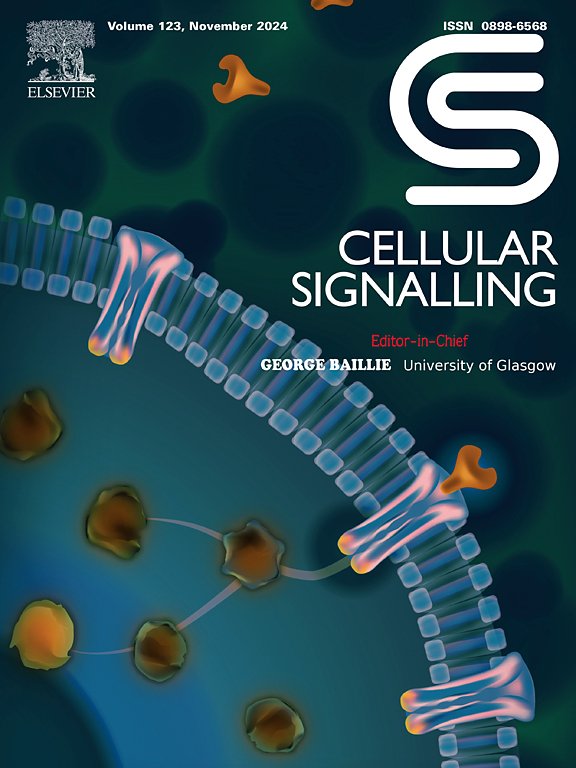SRSF10通过介导FOXO4 2′- o甲基化调节脂质代谢和胶质瘤细胞增殖,从而稳定SNORD46。
IF 3.7
2区 生物学
Q2 CELL BIOLOGY
引用次数: 0
摘要
中枢神经系统最常见的原发性恶性肿瘤是神经胶质瘤。恶性肿瘤的关键特征之一是能量重编程,它涉及脂质代谢的变化。我们的研究目的是探讨SRSF10、SNORD46、FTSJ3和FOXO4在调节胶质瘤细胞脂质代谢和增殖中的作用。我们的研究结果显示,SRSF10、SNORD46和FTSJ3在胶质瘤组织和细胞中的表达显著增加。SRSF10和SNORD46的敲低导致胶质瘤细胞增殖和脂质代谢的减少。此外,我们发现SRSF10通过直接与SNORD46结合来增强其稳定性。研究发现FTSJ3作为2’-O甲基化转移酶发挥作用,而SNORD46通过FTSJ3促进FOXO4的2’-O甲基化,从而下调FOXO4的表达。此外,FOXO4通过结合靶基因ACLY和FASN的启动子区域并抑制转录,抑制胶质瘤细胞的脂质代谢和细胞增殖。此外,SRSF10稳定了SNORD46,增强了SRSF10/SNORD46/FTSJ3/FOXO4信号通路作为胶质瘤细胞增殖和脂质代谢的关键调节因子的作用,为胶质瘤治疗提供了潜在的治疗靶点。本文章由计算机程序翻译,如有差异,请以英文原文为准。
SNORD46 stabilized by SRSF10 regulating lipid metabolism and cell proliferation of glioma cells via mediating FOXO4 2’-O-methylation
The most common primary malignant tumor of the central nervous system is glioma. One of the key features of malignant tumors is energy reprogramming, which involves changes in lipid metabolism. The objective of our study was to investigate the role of SRSF10, SNORD46, FTSJ3, and FOXO4 in regulating lipid metabolism and proliferation of glioma cells. Our findings revealed a significant increase in the expression of SRSF10, SNORD46, and FTSJ3 in glioma tissues and cells. Knockdown of SRSF10 and SNORD46 led to a reduction in both glioma cell proliferation and lipid metabolism. Furthermore, we discovered that SRSF10 enhanced the stability of SNORD46 by directly binding to it. The study revealed that FTSJ3 functions as a 2’-O-methylation transferase, while SNORD46 downregulated FOXO4 expression by promoting its 2’-O-methylation via FTSJ3. Additionally, FOXO4 suppressed lipid metabolism and cell proliferation in glioma cells by binding to the promoter regions of target genes ACLY and FASN and inhibiting transcription. Furthermore, SRSF10 stabilized SNORD46, which enhanced the SRSF10/SNORD46/FTSJ3/FOXO4 signaling pathway's role as a crucial regulator of glioma cell proliferation and lipid metabolism, presenting potential therapeutic targets for glioma treatment.
求助全文
通过发布文献求助,成功后即可免费获取论文全文。
去求助
来源期刊

Cellular signalling
生物-细胞生物学
CiteScore
8.40
自引率
0.00%
发文量
250
审稿时长
27 days
期刊介绍:
Cellular Signalling publishes original research describing fundamental and clinical findings on the mechanisms, actions and structural components of cellular signalling systems in vitro and in vivo.
Cellular Signalling aims at full length research papers defining signalling systems ranging from microorganisms to cells, tissues and higher organisms.
 求助内容:
求助内容: 应助结果提醒方式:
应助结果提醒方式:


